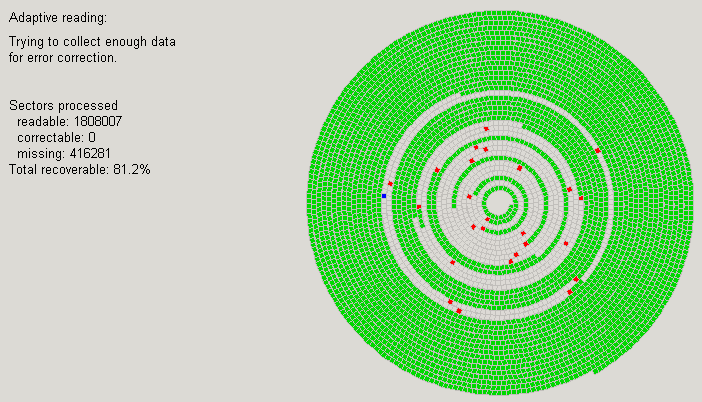| dvdisaster Version 0.64 (pl2) |
| To the Internet version | Deutsch English |
The adaptive reading strategy.dvdisaster contains two different reading strategies.The adaptive reading strategy is recommended for:
Properties of the adaptive reading strategy. The adaptive reading strategy uses a "divide and conquer" approach for locating still readable portions of a damaged medium. The strategy is based upon an article published by Harald Bögeholz in c't-Magazin 16/2005 where it was published together with the program h2cdimage:
 partial screen shot: adaptive reading strategy Configuration Error correction file. Adaptive reading works best when an error correction file is available. Obviously the error correction file must have been created at a time where the medium was still fully readable. To use the error correction file during adaptive reading, enter its name before starting the reading process. Limiting the adaptive reading range. Reading can be limited to a part of the medium. This is not recommended when an error correction file is used since the limit might prevent sectors from being read which are required for a succesful error correction. If no error correction file is available, limiting the reading range might be helpful during multiple reading attempts. Early reading termination. If no error correction file is available, adaptive reading will stop when no unread intervals larger than a selectable size remain. The termination value should not be smaller than 128. Otherwise the laser head will have to carry out lots of repositioning moves during the final phase of the reading process. This will negatively affect both the life expectancy of the drive and its reading capability. A better approach is to stop adaptive reading earlier and then try reading the remaining sectors with an additional linear reading pass. |
|
Copyright 2004,2005 Carsten Gnörlich. Verbatim copying and distribution of this entire article is permitted in any medium, provided this notice is preserved. |
|